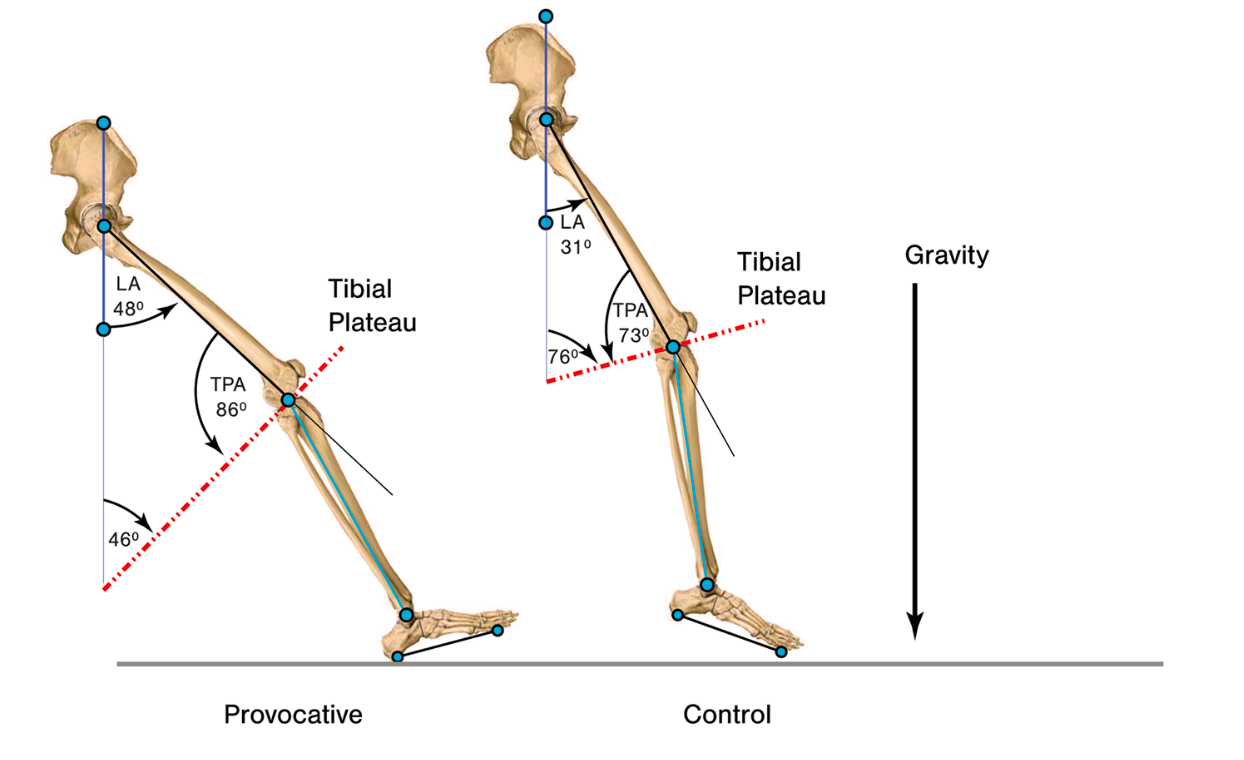Revisiting ACL Injury Mechanisms
📝 Weekly paper summary

Mechanism of non-contact ACL injury: OREF Clinical Research Award 2021 (Bohen and Sheehan, 2022)
Category
Review paper
Context
Anterior Cruciate Ligaments are common, but the mechanism of noncontact injuries is not well understood. Researchers' initial hypotheses centred around impingement of the ACL against the medial border of the intercondylar notch, a vigorous quadriceps contraction, and excessive knee valgus or abduction moments. However, modern tools and research methodology can improve our understanding of how ACLs get injured. This review summarizes a large body of research to provide an alternative approach to noncontact ACL injury mechanisms.
Contributions
- The primary component of ACL injury are large axial compressive forces in a flat-footed position (with minimal opportunity for the ankle plantar flexors to dissipate some of the forces upon landing) and limited knee flexion motion.
- Larger tibial slopes during impact fosters greater posterior sliding of the lateral femoral condyle relative to the lateral tibial plateau, increasing the strain on the ACL:

- Excessive quadriceps force and knee valgus motion seem to contribute to increased ACL loading by lowering the compressive force threshold for injury, but themselves are not the primary mechanism of injury (about 50% of all tears indicate that knee valgus motion occurred at time of injury based on video analyses and there is bone bruising in about 60% of cases); therefore, those with excessive knee valgus may require less hip flexion or a lower ground reaction force to sustain a non-contact ACL injury relative to those with less knee valgus.
- Programs aimed at improving knee alignment should be accompanied by teaching athletes to not land in provocative positions that could increase axial loads since valgus knee motion lowers the threshold for noncontact ACL injury, but does not appear to be its primary mechanism.
- Side Note 1: Without invoking the messiness that is infering causation and mechanisms in biological systems, I think it's important to highlight that, while important, the neurological risk factors associated with ACL injuries (e.g., reaction time) are not part of this paper's scope for identifying mechanisms of ACL injury.
- Side Note 2: knee valgus motion can change how the patella moves relative to the intercondylar groove, and thus may still contribute to knee pain. Therefore, this review is not at all saying that knee valgus motion isn't important to monitor and attenuate :)
🧠 Fun fact of the week

Although this isn't technically a fun fact, it's still really cool/fun to me that we can take pictures of black holes in the center of our galaxy.
🎙 Podcast recommendation
Although not the same as the Perception-Action Podcast, I think Rob does a great job in this video breaking down the Ecological Dynamics view of movement variability, especially in the first few slides. The paper itself is pretty interesting as well!
🗣 Quote of the week
"No human inquiry can be a science unless it pursues its path through mathematical exposition and demonstration."
- Leonardo Da Vinci


